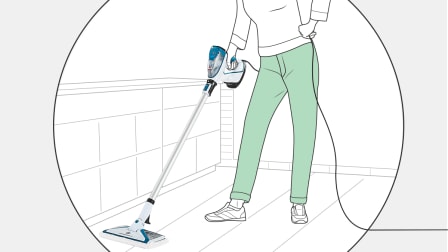Coronavirus FAQ: What You Need to Know About COVID-19

Months after the coronavirus first emerged in Wuhan, China, the pandemic has upended life in much of the world.
Cities, states, and countries have ushered in a new era of social distancing, with many enacting rules and guidelines to slow the spread of the previously unknown virus, which has infected millions of people and led to millions of deaths. Thousands of new cases are still reported each day, even as many countries and all 50 states in the U.S. have eased restrictions.
“We’re approaching an interesting next phase of the pandemic,” says Preeti Malani, MD, a professor of medicine in the division of infectious diseases at the University of Michigan. “The response to COVID-19 has brought rapid and deep change to every aspect of life. Everyone is now thinking about reengaging as a nation, and waiting for a time line depending on where we live.”
“Ramping down was pretty easy,” she adds, but “reopening is going to be much more complicated.”
How the Virus Spread Around the Globe
Although the virus now known as SARS-CoV-2 first appeared in China in the fall of 2019, it took just a few months to spread to almost every corner of the world. Today, there have been more confirmed cases of COVID-19 in the U.S. than in any other country.
The first case in the U.S., reported Jan. 20, was in a traveler who had spent time in Wuhan. For weeks after that, the only cases reported in the U.S. were in travelers or their close contacts. But a little more than a month after that first imported case, the country’s first case of unknown origin appeared in California, just a few days after the Centers for Disease Control and Prevention first warned that Americans should expect to see the disease spread within our borders.
As the U.S. slowly ramped up its testing capacity, new cases began popping up. Now there have been over 7 million reported cases and more than 200,000 deaths across all 50 states, according to Johns Hopkins University. Millions of other cases have been reported around the world, with significant past or current outbreaks in Brazil, India, Russia, Peru, South Africa, Colombia, Spain, Italy, and many other countries.
With testing limited and many cases mild or asymptomatic, experts say many cases go unreported.
What Comes Next
Federal guidelines from mid-March to the end of April advised people to avoid social gatherings, shopping, dining out, visits to nursing homes, and more. Many states and cities went further, closing schools and nonessential businesses.
A study published May 14 in the journal Health Affairs estimated that without those measures, the spread of COVID-19 in the U.S. would have been 35 times greater.
How Does COVID-19 Spread?
Though the first cases of SARS-CoV-2 seem to have jumped from animals to people, the virus spreads from person to person “very easily,” according to the CDC—more easily than the flu, for example.
An early analysis of the first 425 confirmed cases estimated that each infected person was spreading the virus to about 2.2 other people. But this preliminary number can vary widely depending on conditions and control measures.
As a respiratory virus, the coronavirus spreads in droplets when someone coughs or sneezes, File says. People can also release viral particles when they talk, sing, or exhale. That means those within 5 or 6 feet of an infected person are the most likely to get sick when those viral particles land on a mucous membrane, like in an eye.
These viruses can also spread when people touch a surface contaminated with infectious droplets, then touch their nose, mouth, or eyes. But according to the CDC, while transmission via contaminated surfaces is possible, it’s “not thought to be the main way the virus spreads.” At present, there’s no reason to think the pathogen could be transmitted through food or via consumer goods. (See our article about food safety and the coronavirus.)
The coronavirus can also sometimes spread through the air at distances greater than 6 feet, according to CDC guidance released Oct. 5. That’s most likely to happen when people are in indoor, enclosed spaces where particles can build up in the air, and when people are expelling lots of respiratory particles, by shouting, singing, or exercising, the CDC says.
The updated CDC guidance came after months of researchers urging health organizations to recognize that there is significant evidence that SARS-CoV-2 can spread through the air. For example, in July 239 scientists signed a letter to the World Health Organization noting that possibility, and in October researchers wrote in a letter in the journal Science that air is a “major transmission route” for the virus.
While the coronavirus is nowhere near as contagious as something like measles, airborne spread greatly increases the risk that people can catch the virus indoors, especially in poorly ventilated areas, according to Jose-Luis Jimenez, PhD, a professor of chemistry at the University of Colorado at Boulder who conducts research on aerosol droplets and is a signatory of the letter to the WHO.
SARS-CoV-2 is particularly tricky because it seems to replicate in the upper airway and deep in the lungs, according to Vineet Menachery, PhD, an assistant professor in the department of microbiology and immunology at the University of Texas Medical Branch at Galveston. “Where these viruses replicate really dictates how they spread and how severe the disease is,” he says.
Common cold viruses are so contagious because they tend to replicate in the upper airway, causing coughing and sneezing that spread disease. The first SARS and the MERS coronaviruses were so deadly because of the damage they caused while replicating deep in the lungs, but they didn’t spread as much because they didn’t infect the upper airway, Menachery says. By replicating in both the upper airway and deep in the lungs, the new virus seems able to spread easily and cause severe disease.
What’s more, evidence has shown that people infected with SARS-CoV-2 are able to spread it to others before they seem to have symptoms or when their symptoms are very minor. Many other viruses spread most readily when people are already showing clear symptoms.
“We know there is virus spread before you develop symptoms, and then we know that there’s a large group . . . that actually is asymptomatic or has such mild cases that they continue to spread the virus,” Deborah L. Birx, MD, the coronavirus response coordinator for the White House, said at a March press briefing.
People who get COVID-19 appear to get sick a couple of days to two weeks after being exposed.
What Are the Symptoms?
There have been a wide range of symptoms ranging from mild to severe. In most cases, people have a fever and dry cough. In the more severe cases, people have developed serious pneumonia and shortness of breath.
Fatigue is also common, and some people experience diarrhea or nausea. Some people with COVID-19 also report losing their senses of smell and taste. (Read more about recognizing the symptoms of COVID-19.)
A significant proportion of people infected with the coronavirus never develop symptoms—that’s the case in approximately 40 percent of cases, according to current CDC estimates. For those who do develop symptoms, many recover within a period of weeks. But some patients have reported ongoing health issues—sometimes involving problems with their heart, brain, or lungs—that persist for months.
In a small percentage of cases, the disease has been fatal.
A study published Feb. 24 in JAMA by the Chinese Center for Disease Control and Prevention looked at 44, 672 confirmed cases of COVID-19 in China. The researchers characterized 81 percent as mild, 14 percent as severe, and 5 percent as critical.
Scientists have also been trying to figure out what’s known as the case fatality rate—the percentage of cases in which the virus is fatal. That number can change depending on hospital capacity, available treatments, the health of the population, the quality of the data, and other factors.
COVID-19 appears to be deadlier than the seasonal flu, which kills about 0.1 percent of people who are infected. But beyond that, there have been a range of estimates, with huge differences among countries and even within cities.
A Johns Hopkins analysis estimates the case fatality rate in the U.S. at 3 percent, roughly the same as in Brazil and lower than in many European countries like Italy, France, and the U.K. As testing has expanded in the U.S., that number has gone down.
This change helps highlight an important caveat to all of these estimates, says Isaac Bogoch, MD, an epidemiologist and associate professor of infectious diseases in the department of medicine at the University of Toronto. “There’s a growing narrative of people with very mild symptoms who are not sick enough to seek care and not counted,” he says. That means we can’t accurately calculate the fatality rate.
“When we’re able to account for everybody and we have the true denominator, I would not be surprised if it were less than 2 or even less than 1 percent,” Bogoch says.
That echoes what Fauci and the CDC’s director, Robert Redfield, MD, wrote in The New England Journal of Medicine: “If one assumes that the number of asymptomatic or minimally symptomatic cases is several times as high as the number of reported cases, the case fatality rate may be considerably less than 1 percent.”
In May, a University of Washington researcher estimated that the fatality rate among people with COVID-19 symptoms in the U.S. was 1.3 percent. Researchers have also made an estimation taking into account everyone who might have COVID-19—including those who are asymptomatic or who don't get tested—to try to calculate what's called the infection fatality rate. In the U.S., the CDC’s current best estimate for that is 0.65 percent.
Who Is at Risk?
There are now coronavirus hot spots all over the world, including many in the U.S. (You can see whether cases are rising or falling in your county and state by using this tool from The New York Times.)
People who are 65 and older or have underlying medical conditions such as diabetes or lung disease are at a higher risk of severe COVID-19.
In general, “elderly patients and those with underlying diseases tend to do worse with any pneumonia,” says Richard Wunderink, MD, a professor of medicine at the Northwestern University Feinberg School of Medicine in Chicago, who has written about coronaviruses.
The study from the China CDC found that while the case fatality rate overall was 2.3 percent, it was 8 percent among people in their 70s, 14.8 percent among people 80 or older, 10.5 percent among people with heart disease, and 7.3 percent among people with diabetes. Only a small number of confirmed cases (1 percent) were in children under 10; none of them were fatal.
Still, as Fauci cautioned in an interview with CNN: “The virus isn’t a mathematical formula. There are going to be people who are young who are going to wind up getting seriously ill.”
The virus has also disproportionately affected people of color. An analysis of Indiana state data, published in September in the Annals of Internal Medicine, found that the infection fatality rate was three times higher in nonwhite people compared with white people. And data from the CDC show that Black and Hispanic/Latino Americans are nearly five times as likely to be hospitalized for COVID-19 as white Americans.
What Should Travelers Know About the Virus?
In general, travelers should remain vigilant and keep up to date with the latest advisories from the CDC, says Lisa Maragakis, MD, the hospital epidemiologist at Johns Hopkins Hospital in Baltimore and the senior director of infection prevention at the Johns Hopkins Health System. The latest COVID-19-related international travel advisories from the State Department can be found here.
Because of the ongoing spread of COVID-19 in the U.S., most American travelers are barred from entering many international destinations, including the European Union.
The CDC says all travelers should avoid cruise ship travel.
For people considering domestic travel, the CDC advises that “staying home is the best way to protect yourself and others from getting sick” but also offers advice for making any necessary travel as safe as possible. Keep in mind that certain states and counties have mandatory quarantine rules in place for travelers arriving from areas with higher levels of transmission.
Whatever restrictions the government implements, travelers themselves are an important line of defense. People who have recently gone to an area with widespread COVID-19 transmission should contact health officials if they notice any symptoms of infection.
The first two U.S. cases of COVID-19 were diagnosed after returning travelers contacted their healthcare providers because of their symptoms and travel history.
How Should You Protect Yourself?
If you’re not feeling well or have been exposed to the virus, you should take steps to quarantine yourself for 14 days to avoid infecting others. (For more information, see our article on what you might need.)
For everyone else, health officials have advised isolating at home as much as possible, avoiding gatherings, and—especially if you’re in an at-risk group—limiting trips out in public. If you do go out, wear a face covering and practice social distancing, avoiding crowds and staying at least 6 feet away from others. (Some local health officials may have advice that’s even stricter.)
About that face covering: The CDC recommends that nearly everyone wear a basic cloth or fabric face covering when out in public. (Medical masks are generally in short supply and should be reserved for healthcare workers.) Masks mostly help stop someone who is sick from spreading the virus, though they may also provide some protection to the wearer. Because people can be contagious even if they never feel sick, researchers say that universal mask wearing can help curb transmission.
A review of 172 studies on COVID-19, SARS, and MERS, published June 1 in The Lancet, found that social distancing was associated with a large reduction in the risk of infection. Face masks also seem to help, and eye protection may offer additional protective benefits as well, the review found. “However,” the authors wrote, “none of these interventions afforded complete protection from infection.”
Measures that can help protect you from the flu—like frequent hand-washing and avoiding sick people—can also help protect you from COVID-19. (For more information, see our article on the protective gear you need.)
What Should You Do If You Get Sick?
If you develop symptoms of COVID-19, it’s worth contacting your doctor or local public health department to see about getting a diagnostic test for the virus. (Read more about getting tested for the disease.)
Certain severe symptoms should be considered emergency warning signs and prompt a call to an emergency room, according to the CDC. These include significant trouble breathing, persistent pain or pressure in the chest, sudden confusion, and bluish lips or face. But most cases of COVID-19 can be treated at home, often with assistance provided via telehealth.
To treat fever, cough, and other symptoms at home, you can use over-the-counter drugs including acetaminophen, ibuprofen, and dextromethorphan. You should also rest and drink fluids. Try to quarantine yourself away from others as much as possible in your own home, and wear a mask whenever you interact with anyone else.
How Is COVID-19 Treated?
While most people who develop COVID-19 can manage the condition at home using over-the-counter therapies and rest, about 20 percent of cases are more serious and may require treatment in a hospital.
Hospitals provide supportive care, including supplemental oxygen, fluids, and antibiotics, to fight secondary bacterial infections. More severe cases may require patients be put on a ventilator to help them breathe. Doctors are also testing a number of experimental therapies, including the antiviral drug remdesivir, the steroid dexamethasone, and convalescent plasma, which is collected from recovered patients. (Read more about treatments for COVID-19.)
Caution is warranted with any experimental therapy. Despite early interest in the antimalarial drug hydroxychloroquine, for example, more recent research shows that it doesn’t seem to help hospitalized patients with COVID-19.
Should You Get an Antibody Test?
There’s been a lot of buzz about antibody tests, which can reveal whether your blood has antibodies to SARS-CoV-2. Theoretically, a positive result would indicate that you’ve been exposed to the coronavirus that causes COVID-19—whether or not you developed symptoms of the disease.
While we don’t yet know whether being exposed to the virus provides immunity to future infections, most experts think it’s likely that having antibodies means you’ll have at least some protection from infection for some period of time.
Getting a test to see whether you’ve been exposed may be tempting. But experts don’t recommend taking an antibody test to see if an illness you had months ago was COVID-19, or to see if you’re now immune. Most tests are most accurate three or four weeks after symptoms arise, and antibodies start to fade after that.
Proceed with caution before taking an antibody test unless it’s part of an epidemiological survey or unless your doctor is trying to see if a persistent mysterious illness could be COVID-19. (Read more about antibody tests.)
What If You Have to Go Back to Work?
Despite the fact that infections are still on the rise in some parts of the country, many people who have been furloughed or are teleworking are now being asked to return to the office.
Before you return to work, you should take all the steps you can to make sure your employer is providing adequate protection. Social distancing measures should be in place, making it possible to stay at least 6 feet away from others. People should wear personal protective equipment to make infection less likely, especially if they have to interact with customers or other employees. And there should be procedures in place in case someone develops symptoms or tests positive for COVID-19.
If you’re at a higher risk for complications from COVID-19 and can do your job remotely, a request to continue teleworking may be covered under the Americans with Disabilities Act. (Read more about returning to work during the pandemic.)
Editor’s Note: This article was originally published Jan. 23, 2020.
The Right Way to Wash Your Hands
Frequent hand-washing can keep you from getting sick—but you might not be doing it right. “Consumer 101” TV show host Jack Rico shares Consumer Reports’ tips from the experts.





















